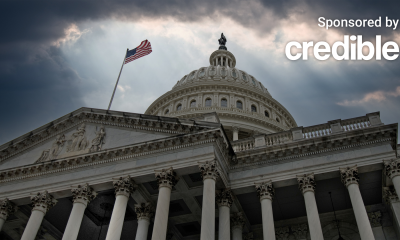Investing
4 Tried-and-True Ways to Better Market Your Business

Entrepreneur
Marketing today encompasses a dizzying array of techniques, including market research, branding, inbound and outbound marketing, search engine optimization, content creation, influencer campaigns and more.
Marketing may seem complex, especially for an executive without direct exposure to their marketing team. However, there is a simple basis of all marketing which the American Marketing Association calls the “four Ps:” product, place, price and promotion.
Related: 6 Innovative Marketing Strategies Designed for Startups
A product primer
You believe you have invented (or acquired) the best thing since sliced bread. But, before launching a business, use market research to determine whether there is an actual market for it and whether that market is prepared to pay its price. According to the Small Business Association (SBA), “market research blends consumer behavior and economic trends to confirm and improve your business idea.”
Market research can be conducted by hiring a specialized company, engaging with an online platform or a DIY alternative like Survey Monkey. Here is what you need to answer:
- Is there a desire for your product or service?
- Where do your customers live and can your business reach them?
- Are similar options already available and what do they cost?
Once it’s clear that there will be a robust audience for the product or service you intend to offer, it’s time to drill down to the next “P” — place.
Product “place”ment
Unless the business you’re running is focused on a large ecommerce platform like Amazon, the right business location is important. For my company, having launched our brick-and-mortar franchised restaurant as a food truck in Miami, we knew where our customers were and that determined our first physical location — but our experience is not the standard for every business.
Place will revolve around the type of business and the results of your market research. Here are some examples of “places:”
- Home-based — a good place to start a DIY enterprise.
- Retail — storefronts, malls, airports, pop-ups.
- Mobile — for example, a food truck.
- Commercial — for businesses that don’t need foot traffic.
- Industrial — for manufacturing and distribution operations.
Related: 10 Things to Consider When Choosing a Location for Your Business
The price is right
Without an advanced business degree, it can be difficult to analyze all of the factors involved in pricing. From solely a marketing standpoint, knowing the economic status of the target consumer is of primary importance. Simply put, how much will the market bear?
Containing costs may be required to gain a larger profit while keeping the pricing pegged to the marketplace. Here are a few tips:
- Conduct a thorough cost analysis.
- Negotiate with suppliers for better deals.
- Implement portion/product size control measures.
- Introduce energy-saving practices.
Get promoted
Now for the fun part. Promotion is where creativity achieves maximum impact. The fact is: “Brands that are willing to take risks and think outside of the box are often the ones that stand out in a crowded market.”
When you think about promotion, keychains with business logos, billboards and signage in general may come to mind. While these can be excellent promotional vehicles, there are newer and more exciting options. Consider exploring how your business might benefit from pop-up locations in addition to your main venue, or offer car magnets to customers and let them be “brand ambassadors.” Social media presence is also essential (and a whole topic of its own).
Here are a few specific ideas that can help the business raise its profile a few notches:
1. Giveaways
Consider giving away an item that represents the brand. In our case, that’s a taco giveaway, but it could even be just a lanyard with your logo. Giveaways should always be a line item on the marketing budget with advertising and public relations because nothing engenders goodwill like freebies.
Here are four reasons why giveaways work:
- Creates brand recognition with a memorable experience.
- Shareable on social media.
- Reaches new customers and fosters loyalty in existing customers.
- Provides the opportunity to gather data such as email addresses.
Giveaways — whether an actual product, a promotional item or offering free services — boost community engagement, brand awareness, rapport and social media buzz. Always leverage social channels to communicate the giveaway highlights before, during and after a campaign.
Related: How a Contest or Giveaway Can Attract Business Prospects
2. Guerrilla campaigns
Many businesses underestimate the value of a properly executed guerrilla marketing campaign. But first, what exactly is a guerilla marketing campaign? According to the Entrepreneur Small Business Encyclopedia, it means going after the conventional goals of profits, sales and growth by using unconventional means, such as expanding offerings during economic downtimes to inspire customers to purchase increased quantities.
It’s important to develop a campaign that leverages guerrilla marketing tactics in a way that you can measure its impact by applying a combination of quantitative and qualitative metrics. Here’s how:
- Define clear objectives.
- Track online engagement and monitor media coverage.
- Calculate the ROI to make sure the money you spent was worth the resulting sales and/or customer engagement.
Here’s a personal example: A customer ordered food from my restaurant delivered to her home, and when it arrived, raccoons stole it. She recorded the incident and posted it on social media, and it got picked up by local news. We worked to get the video uploaded to some of the bigger meme accounts on Instagram and Facebook, and it got more attention than any print ad or TV commercial. All it cost us was a $100 e-gift card to the customer to compensate for her stolen food.
3. “Old school” PR stunts
PR stunts used to have a bad rap, but they’re becoming more common again — as long as you’re ethical about it. A PR stunt can often be an easy-to-implement, unconventional marketing strategy. Before we became a brick-and-mortar restaurant, we operated a food truck. We got friends and family to stand in line throughout the day to create the perception of a busy food truck. Promoting small crowds swarming the truck attracted even bigger crowds.
Eventually, the number of fans enjoying the food truck got so large that we had to open a physical location — then another and another. Now we’ve become a successful franchise business.
Related: Does PR Actually Help Increase Sales? Yes — Just Do It Right and Be Patient
4. Strategic alliances
Look for businesses that are aligned, but do not compete with your product or service, to create cross-promotions. For example, seek a partnership with a local sports team. Studies show that 66% of “forever” sports fans take action after seeing a brand’s sponsorship.
To the four Ps of marketing (product, place, price and promotion), I would like to emphasize one “C” — creativity. Creativity is key in marketing, but don’t get too carried away: Always keep the customer in mind and make everything you do relevant to the brand.
Read the full article here

-

 Side Hustles5 days ago
Side Hustles5 days agoThis User-Friendly H&R Block Software Package is Only $40, While Supplies Last
-

 Investing5 days ago
Investing5 days agoTikTok faces US ban deadline as users brace for fallout By Reuters
-

 Passive Income4 days ago
Passive Income4 days agoTrain for a New Tech Career in 2025 With This $25 Course Bundle
-

 Personal Finance6 days ago
Personal Finance6 days agoDecember inflation clouds Fed's outlook on interest rate cuts
-

 Side Hustles6 days ago
Side Hustles6 days agoSupreme Court TikTok Ban: What to Know, January 19 Deadline
-

 Passive Income6 days ago
Passive Income6 days agoUse These ChatGPT Prompts to Boost Your Amazon Sales
-

 Side Hustles1 day ago
Side Hustles1 day agoYou Might Not Get a New Job in 2025 Without These 2 Skill Sets
-

 Make Money5 days ago
Make Money5 days ago7 Types of Jobs With Flexible Schedules — and 10 Companies Hiring


















